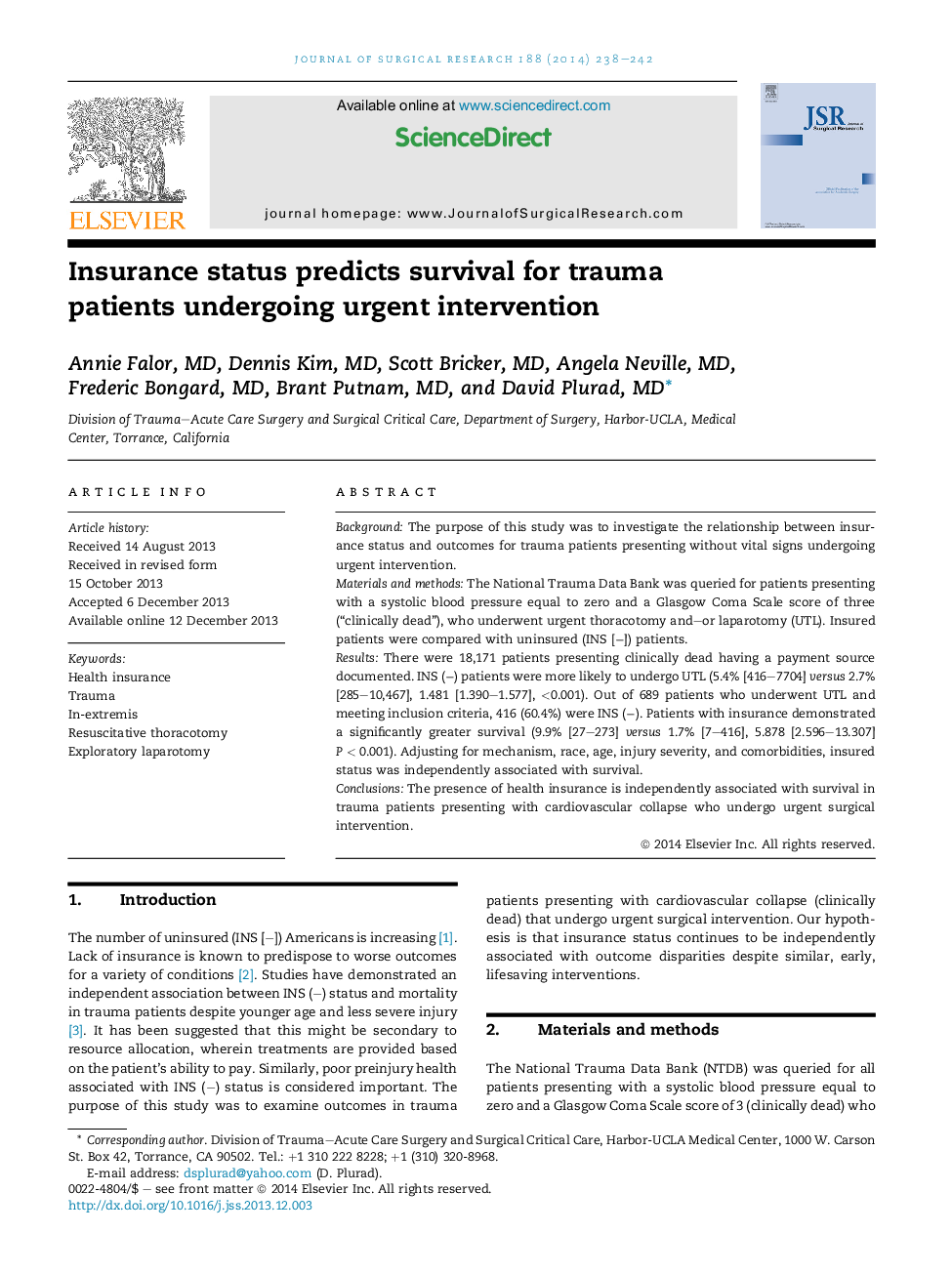| Article ID | Journal | Published Year | Pages | File Type |
|---|---|---|---|---|
| 4300244 | Journal of Surgical Research | 2014 | 5 Pages |
BackgroundThe purpose of this study was to investigate the relationship between insurance status and outcomes for trauma patients presenting without vital signs undergoing urgent intervention.Materials and methodsThe National Trauma Data Bank was queried for patients presenting with a systolic blood pressure equal to zero and a Glasgow Coma Scale score of three (“clinically dead”), who underwent urgent thoracotomy and–or laparotomy (UTL). Insured patients were compared with uninsured (INS [−]) patients.ResultsThere were 18,171 patients presenting clinically dead having a payment source documented. INS (−) patients were more likely to undergo UTL (5.4% [416–7704] versus 2.7% [285–10,467], 1.481 [1.390–1.577], <0.001). Out of 689 patients who underwent UTL and meeting inclusion criteria, 416 (60.4%) were INS (−). Patients with insurance demonstrated a significantly greater survival (9.9% [27–273] versus 1.7% [7–416], 5.878 [2.596–13.307] P < 0.001). Adjusting for mechanism, race, age, injury severity, and comorbidities, insured status was independently associated with survival.ConclusionsThe presence of health insurance is independently associated with survival in trauma patients presenting with cardiovascular collapse who undergo urgent surgical intervention.
